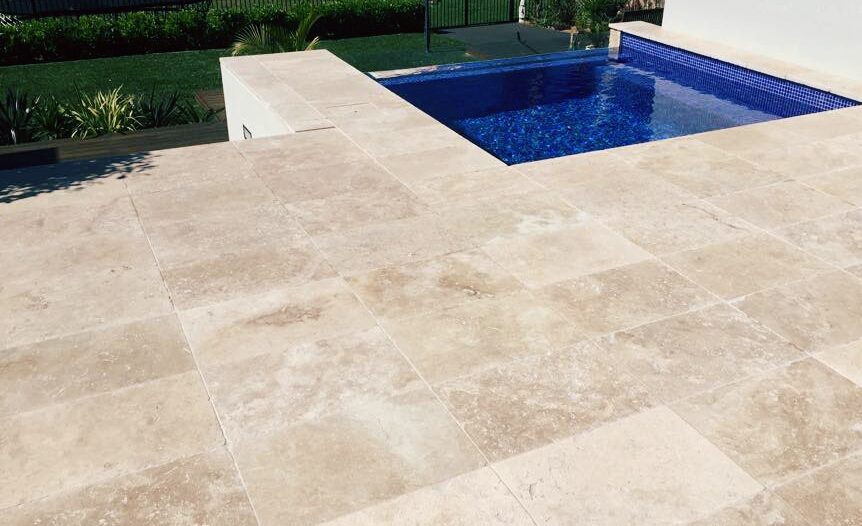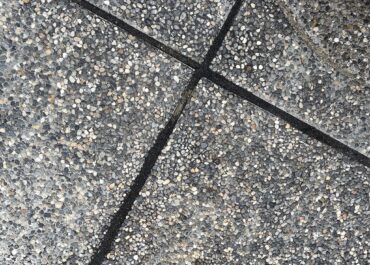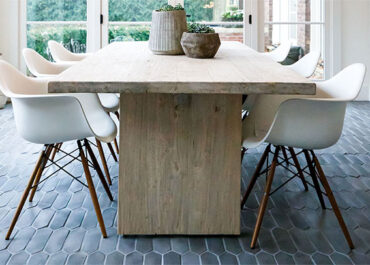
If you’re fond of hardscape projects, chances are your backyard or driveway is filled with beautiful paving stones. If you have a pool deck, the chances are even higher – and the material chosen says a lot about you. Nowadays, when compared to traditional building elements such as bricks and concrete, travertine has dominated the spotlight on the market due to its natural properties, which make for a great cost-benefit in the long run. But do you know how to clean mold from outdoor travertine pavers?
Just like any other paving stone, it is prone to visual and structural damage from weather conditions and leftover organic residue. In this article, you’ll learn how to solve a problem that unsettles many homeowners across the world.
To read our complete guide on travertine maintenance, click here.
How to clean mold from outdoor travertine pavers
Mold is a natural fungi structure that can form anywhere that moisture and oxygen are present. Unfortunately, in the case of pavers, this means that unprotected joints are the perfect spots for inhabitation, regardless of the material chosen.
Travertine stones are no exception. Whether used for patios, pathways, or pool surrounds, they effortlessly blend aesthetic appeal with functionality, but they are also vulnerable to mold – especially when installed in high-traffic, out-in-the-open areas such as poolsides and driveways, their most common applications. You see, to prevent bigger damage to their surface, they must get cleaned at least once a week with a broom and gentle washing, but even then the mold might prevail.

No need to worry, though. It’s possible to avert this obnoxious matter by undertaking some simple measures in your daily routine – and it’s best if you do it sooner rather than later. Given how it thrives in damp and shaded areas, it’s important to address the underlying moisture issue as well as the mold itself to prevent it from coming back.
Check out a brief tutorial to combat mold growth in your paver project:
Materials needed
- Safety gear: Wear gloves, a mask, and eye protection to protect yourself from mold spores.
- Broom or brush: To remove loose dirt and debris from the pavers.
- Hose or pressure washer: For rinsing and initial cleaning.
- Bucket: For mixing a cleaning solution.
- Cleaning solution: You can use a commercial stone cleaner, a mixture of water and mild dish soap, or a mixture of water and white vinegar (1 part vinegar to 3 parts water).
- Scrub brush or broom with stiff bristles: For scrubbing the pavers.
- Mold remover: If the mold is stubborn, consider a specific mold or mildew remover, available at hardware stores.
- Sealer: Optional, but recommended to prevent future mold growth. Learn all about sealing travertine by clicking here.
Steps to clean mold from travertine pavers
- Prepare the area: Begin by removing any furniture or obstacles from the paver area, and sweep or brush away loose debris.
- Rinse with water: Use a hose or pressure washer to rinse the pavers thoroughly – this will remove some of the surface molds and make the cleaning process more effective.
- Prepare cleaning solution: Mix your chosen cleaning solution in a bucket according to the instructions on the product label or use the water and mild dish soap or vinegar solution mentioned earlier.
- Apply cleaning solution: Pour the cleaning solution over the affected areas of the travertine pavers.
- Scrub: Use a scrub brush or broom with stiff bristles to scrub the pavers, paying extra attention to the moldy areas. You can apply some pressure here but don’t use anything too abrasive that might damage the stone.
- Let it sit: Allow the cleaning solution to sit on the pavers for 10-15 minutes. This gives it time to penetrate and break down the mold.
- Scrub again: Scrub the pavers once more to agitate the mold and cleaning solution.
- Rinse thoroughly: Then, use your hose or pressure washer to rinse the pavers thoroughly, making sure to remove all traces of the cleaning solution.
- Repeat if necessary: Finally, if some mold remains, you may need to repeat the process.

Why is mold such a concerning issue?
Mold presents two main problems to your life: it compromises your health and the lifespan of your project, damaging it both visually and structurally.
You see, these fungi can produce toxins known as mycotoxins. Although the risks are very low, constant exposure to these toxins can potentially have adverse health effects. Mycotoxins are more of a concern when dealing with indoor mold infestations, particularly in areas with poor ventilation and prolonged exposure.
That said, if your travertine pavers have been installed indoors, try not to inhale mold spores. Keep the area well-ventilated, and avoid blowing or disturbing spores into the air. After handling moldy materials or cleaning (the methods listed here are also applicable in this scenario), wash your hands and clothing thoroughly to remove any potential mold spores.
Here are the potential issues that untreated mold can cause over time:
Visual damages
One of the most common visual effects of mold on travertine pavers is discoloration. Naturally, mold appears as dark green, black, or brown spots on the surface, which can significantly detract from the pavers’ aesthetic appeal that you strived for.
Mold can also leave behind stubborn stains on the surface of the pavers – making them appear unsightly and difficult to clean. And beware: in humid areas left unattended, algae can also thrive, leaving behind green or brownish marks on the travertine.

Read as well: How to Use Tumbled Travertine Pavers in Hardscape Design
Structural damages
Over time, mold (and eventually algae) can contribute to surface erosion on travertine pavers. This can result in a loss of their smooth texture and may create uneven or rough surfaces around the floor, which can lead to tripping and wheel damage in vehicles.
Not only that – but in extreme cases where mold growth is extensive and persists for a long time, it can start to weaken the base structure of the project. This weakening can lead to cracks and chipping, also making the pavers slippery when wet (which creates a safety hazard, especially around pools or areas where kids and elderly people walk).
And of course, we must talk about grout damage. If your travertine pavers are set with grout between them, mold can infiltrate the grout lines, causing them to deteriorate or discolor. This can affect the stability of the entire paved area, urging you to purchase new individual units right out of an uncalled-for budget.
Can I burn mold?
This is a recurring question among homeowners who love a drastic approach to remove the matter from the root. However, burning mold is not a safe or effective method for dealing with it – especially on travertine pavers, which are delicate natural stones in their own way.
First, burning mold can release harmful fumes and toxins into the air, which can be dangerous to your health. Second, burning may damage or discolor the surface of your paves, making the problem even worse.

Therefore, instead of burning, it’s best to follow the recommended steps for cleaning and removing mold as we’ve outlined before. These methods are safer, more effective, and less likely to cause harm to your investment and health.
That said, if you’re dealing with extensive mold growth, have underlying health conditions, or are unsure about handling the mold safely, it’s always wise to consult experts in the industry. They have the proficiency and the right equipment to repair your hardscape project without fuss – saving you time, effort, and money.
And speaking of hiring experts…
Eagle Pavers can restore your pavers for you!
Although versatile, beautiful, and extremely durable, any kind of paver stone will suffer from the inevitable passage of time one way or another. Now, you have a general idea of how to clean mold from outdoor travertine pavers before it becomes a stronger headache – but sometimes you might not have the time for a full commitment.
That’s why, once again, consulting professional help is key. And if you live near Sarasota, Florida, our team is here to give you a hand. Don’t hesitate to contact Eagle Pavers today – we can even offer you a free quote on whatever hardscaping need you might have!
As a branch of Eagle Stones, we’ve been serving the city and its surrounding counties for years now. We provide top-quality services that include paver supply, installation, sealing, and maintenance. We’ll be waiting for you.




